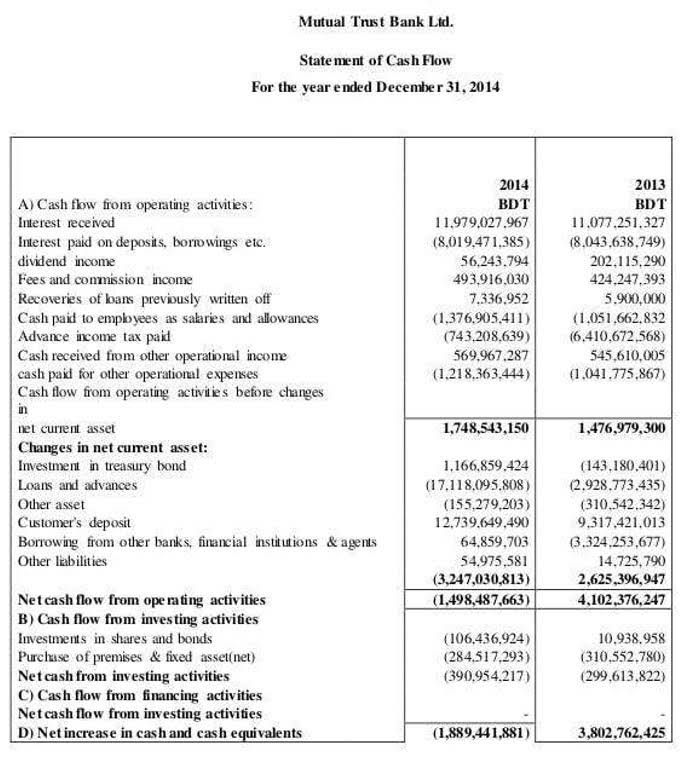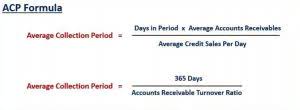Content
- Reporting Requirements
- Financial Consolidation At The Click Of A Button
- Separate Financial Statements Of The Parent Or Investor In An Associate Or Jointly Controlled Entity
- Equity Method Vs Consolidation Method Accounting
- Consumer Debt Consolidation
- Can Your Accounting Software Manage Multiple Entities?
- What Are External Financial Statements?

All retail stores are experiencing growth rates in a single-digit to low double-digit percentage range. Cash flows were discounted at a weighted average cost of capital rate of between 3.7% and 18.9% when determining the value in use of retail stores.

There are also different consolidation accounting methods that can vary depending on the controlling stake a parent organization has in a subsidiary. For instance, if the parent has a controlling interest in the subsidiary (more than 50%), then consolidation accounting is used. In this case, all the subsidiary company’s assets, liabilities, revenues, and expenses are combined into the parent company’s financial statements. When consolidating financial statements, all of the subsidiary company’s assets become assets on the parent company’s balance sheet.
However, due to the dimension of the Group, and to the proactive management of its country risk exposure, the allowances recognized in this connection are not material with respect to the credit loss allowances recognized. As of December 31, 2011, 2010 and 2009, these country risk allowances represent 0.43%, 0.37% and 0.52% of the credit loss allowances recognized of the Group. The Group has policies, methods and procedures for hedging its credit risk, for insolvency attributable to counterparties and country-risk. These policies, methods and procedures are applied to the arrangement, study and documentation of debt instruments, contingent risks and commitments, as well as the detection of their deterioration and in the calculation of the amounts needed to cover their credit risk. All financial instruments are initially accounted for at fair value which, unless there is evidence to the contrary, shall be the transaction price.
Eliminate the cost and complexity of managing multiple accounting and ERP systems by operating the entire business on a single platform. Continually monitor financial and operational systems and restrict access to sensitive data with role- and user-based access controls.
Reporting Requirements
Extensive knowledge of accounting policies and procedures in the oil and gas industry and the ability to conduct research on an IFRS or Saudi Aramco accounting or financial reporting matter is preferred. You should have demonstrated financial analytical skills that include the Consolidation Accounting ability to evaluate both industry and individual company information and comprehend advanced accounting topics. You must be able to work with minimal supervision, possess good project management skills, and be able to offer logical and innovative solutions to complex issues.

It is, therefore, unnecessary for these details to be repeated in the consolidated accounts, and an aggregate figure will suffice. Wish values diversity https://www.bookstime.com/ and is committed to creating an inclusive work environment. We do not discriminate based on any legally-protected class or characteristic.
Financial Consolidation At The Click Of A Button
Consolidation accounting is the process of combining the financial results of several subsidiary companies into the combined financial results of the parent company. This method is typically used when a parent entity owns more than 50% of the shares of another entity. It is also essential to discuss FASB Interpretation no. 46, which requires companies to follow its guidelines for consolidating Variable Interest Entity . Second, equity investors in the VIE lack any of three characteristics of controlling financial interest.
Extensive knowledge of accounting policies and procedures established pursuant to International Financial Reporting Standards is required as well as a strong understanding of the content of financial statements prepared within the IFRS framework. Easily identify and match intercompany transactions, automatically post elimination journal entries and quickly settle intercompany accounts. Automate Your Accounts Payable Control your costs with SoftLedger’s accounts payable automation and approval workflows. Collect Quicker On Accounts Receivable Collect quicker with recurring and usage-based accounts receivable automation. Smart General Ledger SoftLedger’s powerful general ledger software is fast to implement and seamlessly adapts to your business.
- That tends to undermine the value of consolidated accounts and we intend to curb the practice.
- Consolidation involves taking multiple accounts or businesses and combining the information into a single point.
- In consolidated accounting, the information from a parent company and its subsidiaries are treated as though it comes from a single entity.
- In the event of a discrepancy, the original Spanish-language version prevails.
- The final financial reporting statements remain the same in the balance sheet, income statement, and cash flow statement.
- • Manage the consolidation process and system close at month, quarter, and year-end close.
The amount of the impairment losses incurred on these instruments relates to the positive difference between their respective carrying amounts and the present values of their expected future cash flows. If a financial instrument has a variable interest rate, the discount rate for measuring any impairment loss is the current effective rate determined under the contract. The accounting standards and policies and the valuation criteria applied in preparing these consolidated financial statements may differ from those used by some of the entities in the BBVA Group. For this reason, the necessary adjustments and reclassifications have been introduced in the consolidation process to standardize these principles and criteria and comply with the EU-IFRS. Is the proportion of equity or net assets in a subsidiary that is neither directly nor indirectly attribute to a parent. While the parent has to consolidate its subsidiaries’ assets, liabilities, etc., into its financial statements, the asset/income attributable to minority interest should not be added to the group’s consolidated financial statements.
Accordingly, the Group records warranties in the balance sheet in conformity with IAS 37 provisions, contingent liabilities and contingent assets. For cash-settled share-based payments, a liability is recorded for the services received and measured with its fair value upon recognition. Until the debt is cleared, its fair value is recalculated on every balance sheet date and on the settlement date and all changes to the fair value are recognized in the income statement. The right-of-use assets are recognized as a separate line item in the consolidated balance sheet. The lease liability is recognized as a separate line item on the consolidated balance sheet. The fair values of the derivative instruments used to hedge planned transactions and to hedge the fair value of a recognized asset or liability are shown under other short-term and long-term financial assets respectively liabilities.
Separate Financial Statements Of The Parent Or Investor In An Associate Or Jointly Controlled Entity
With reference to the bottom-up budget, country- and CGU-specific sales and cost developments are used as a basis for the remaining useful life. The growth rates used are based on the expected nominal retail growth in the respective market for the respective planning year.
The elimination of intercompany transactions is an important process that requires further explanation. This process requires that the equity accounts, including common stock and retained earnings of subsidiaries, must be eliminated on consolidation. The consolidated statement of income is prepared by only accounting for transactions that take place outside of the entity created. It implies that all transactions, including purchases and sales between the parent company and its subsidiaries, must be removed . In addition, certain transactions, including loans to and from subsidiaries, are also adjusted. These eliminations relate to accounts receivable and payable arising due to the transactions within the group. The investment of the parent company in the subsidiary is also adjusted and not included in the consolidated balance sheet.
- Financial guarantees may take the form of a deposit, financial guarantee, insurance contract or credit derivative, among others.
- Property, plant and equipment are measured at acquisition costs, net of accumulated depreciation.
- Value adjustments are recognized on the basis of the past earnings situation and the business expectations for the foreseeable future, if this criterion is not fulfilled.
- The name and description of the acquired entity and the percentage of the voting equity interest acquired.
The decision to consolidate financial statements when a company acquires a small company is based on the general rules listed below. The purchasing company uses the cost method to account for this type of investment. Under the cost method, the investment is recorded at cost at the time of purchase. The company does not need any entries to adjust this account balance unless the investment is considered impaired or there are liquidating dividends, both of which reduce the investment account. The period for which results of operations of acquired entity are included in the income statement of the combining entity. On or prior to the date hereof, each Grantor shall establish a lock-box service for collections of Accounts at a Clearing Bank reasonably acceptable to the Agent and subject to a Blocked Account Agreement and other documentation reasonably acceptable to the Agent.
Equity Method Vs Consolidation Method Accounting
However, the Financial Accounting Standards Board defines consolidated financial statement reporting as reporting of an entity structured with a parent company and subsidiaries. A combined statement with the financial data of both the parent and subsidiary companies is created. The subsidiary’s revenue, liabilities, profits, losses, etc., are consolidated with the parent’s. If a subsidiary uses a different currency as its operating currency, an additional consolidation accounting step is to convert its financial statements into the operating currency of the parent company. For determining the fair value less costs to sell and value in use, the expected cash flows are based on corporate planning data.
- They are based on historical experiences and other factors, including expectations regarding future global and industry-related trends that appear reasonable under the current circumstances.
- With regard to the leases that were capitalized, tax deduction potential is allocated to the respective right-of-use asset.
- Such an exemption was included in earlier versions of IAS 27, but in revising IAS 27 in December 2003 the IASB concluded that these restrictions, in themselves, do not preclude control.
- While ASC 810 provides several characteristics to consider in the VIE assessment, only one must be met for the reporting entity to conclude that the legal entity is a VIE.
- Each Grantor shall instruct all of its Account Debtors to make all payments directly to the address established for such service.
- Consolidation accounting is the combining of financial reports of subsidiary companies with that of their parent company.
The preparation of the consolidated financial statements requires some assumptions and estimates that have an impact on the measurement and presentation of the recognized assets and liabilities, income and expenses, as well as contingent liabilities. The assumptions and estimates are based on premises, which in turn are based on currently available information. In individual cases, the actual values may deviate from the assumptions and estimates made.
Consumer Debt Consolidation
International Financial Reporting Standards are a set of accounting rules currently used by public companies in 166 jurisdictions. A subsidiary is an independent company that is more than 50% owned by another firm. Off-balance sheet financing is a form of financing in which large capital expenditures are kept off of a company’s balance sheet through various classification methods. Peggy James is a CPA with over 9 years of experience in accounting and finance, including corporate, nonprofit, and personal finance environments. She most recently worked at Duke University and is the owner of Peggy James, CPA, PLLC, serving small businesses, nonprofits, solopreneurs, freelancers, and individuals.
- If other factors exist that reduce the influence or if significant influence is gained at an ownership of less than 20%, the equity method may be appropriate (FASB interpretation 35 underlines the circumstances where the investor is unable to exercise significant influence).
- The BBVA Group recognizes the actuarial gains or losses arising on all other defined-benefit post-employment commitments directly under the heading “Valuation adjustments” of equity in the accompanying consolidated balance sheets .
- The concepts explain the advantages and drawbacks of this approach, how to implement it and various measures and success factors.
- Note 17 details the impact that application of the proportionate consolidation method on these entities would have had on the consolidated balance sheet and income statement.
- In the Group, financial assets are generally held under a business model that provides for “holding” the asset until maturity, in order to collect the contractual cash flows.
When a company purchases 20% or less of the outstanding common stock, the purchasing company’s influence over the acquired company is not significant. (APB 18 specifies conditions where ownership is less than 20% but there is significant influence). The standard also amends the guidance for determining whether a decision-making fee is a variable interest.
Can Your Accounting Software Manage Multiple Entities?
Centralized governance, the ability to apply multiple accounting standards and tax rules to each transaction and increased operational visibility work together to improve compliance and reduce risk. Ecommerce With SoftLedger’s ecommerce accounting software you can track your inventory seamlessly Manufacturing Effortlessly manage your inventory and track your costs through every stage of production with SoftLedger’s manufacturing accounting software. Franchises If your franchise accounting software isn’t specifically built to manage multiple entities, it could be holding you back from getting the information you need. As these questions make evident, financial consolidation feeds into many aspects of your company’s growth.

Consolidated accounts combine the financial statements of separate legal entities controlled by a parent company into a set of financial statements for the entire group of companies. The concepts explain the advantages and drawbacks of this approach, how to implement it and various measures and success factors. The deferred tax assets and liabilities recognized are reassessed by the consolidated entities at each balance sheet date in order to ascertain whether they are still current, and the appropriate adjustments are made on the basis of the findings of the analyses performed. The dividends paid from other companies are recognized under the heading “Dividend income” in the accompanying consolidated income statement for the year in which the right to receive them arises . Berkshire Hathaway Inc. (BRK.A, BRK.B) and Coca-Cola are two company examples.
What Are External Financial Statements?
The present values of post-employment welfare benefits are quantified on a case-by-case basis and are recognized under the heading “Provisions – Provisions for pensions and similar obligations” in the consolidated balance sheets . The consolidated insurance entities of the BBVA Group credit the amounts of the premiums written to the income statement and charge the cost of the claims incurred on final settlement thereof to their income statements. At the close of each year the amounts collected and unpaid, as well as the costs incurred and unpaid are accrued at this date. Income from guarantee instruments is registered under the heading “Fee and commission income” in the consolidated income statement and is calculated by applying the rate established in the related contract to the nominal amount of the guarantee . In the case of debt instruments , give rise to an adverse impact on the future cash flows that were estimated at the time the transaction was arranged. So they are considered impaired when there are reasonable doubts that the balances will be recovered in full and/or the related interest will be collected for the amounts and on the dates initially agreed. Specialised closing and consolidation software provides a fast track to consistent financial consolidation and reporting, as companies with disparate systems are integrated through a mapping process.
The subsequent measurement of the right-of-use assets is at acquisition cost less accumulated depreciation and impairment losses. The assets and liabilities of foreign subsidiaries, the functional currency of which is not the euro, have been converted to euros at the average exchange rates valid on the balance sheet date. Expenses and income have been converted at the annual average exchange rates.
This was based on a risk-free interest rate on equivalent term structures of 0.4% and a market risk premium of 7.8%. The value in use is compared with the carrying amount of the assets allocated to the retail store (in particular, right-of-use assets from the lease, tenant fixtures, inventories and proportionate corporate assets allocated to the central areas). If the carrying amount of the assets of the retail stores exceeds the determined value in use, the fair value of the cash-generating unit is also calculated. If an impairment occurs, the fair value of the right-of-use asset is determined separately, taking into account materiality aspects, using internal or external data sources.
